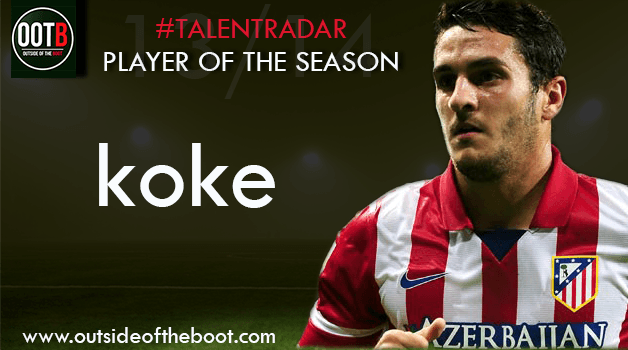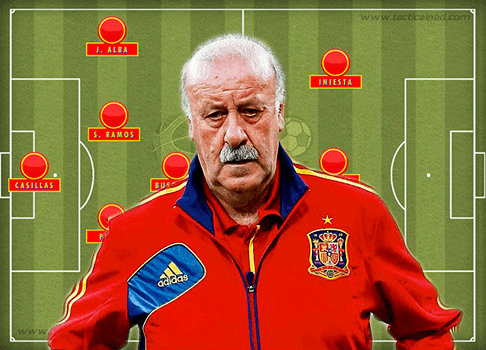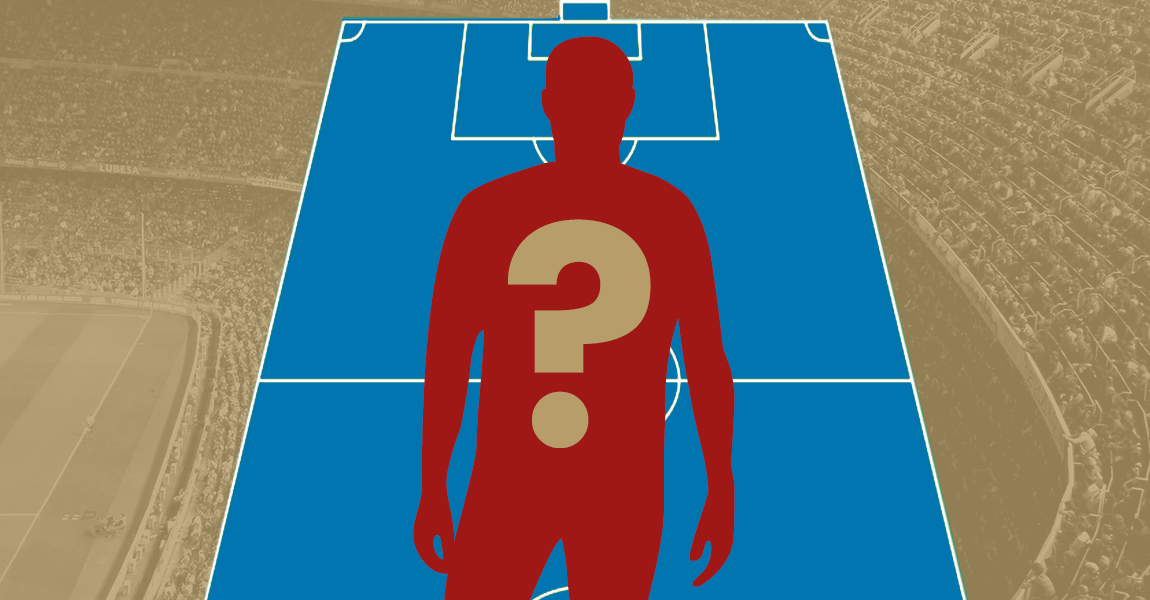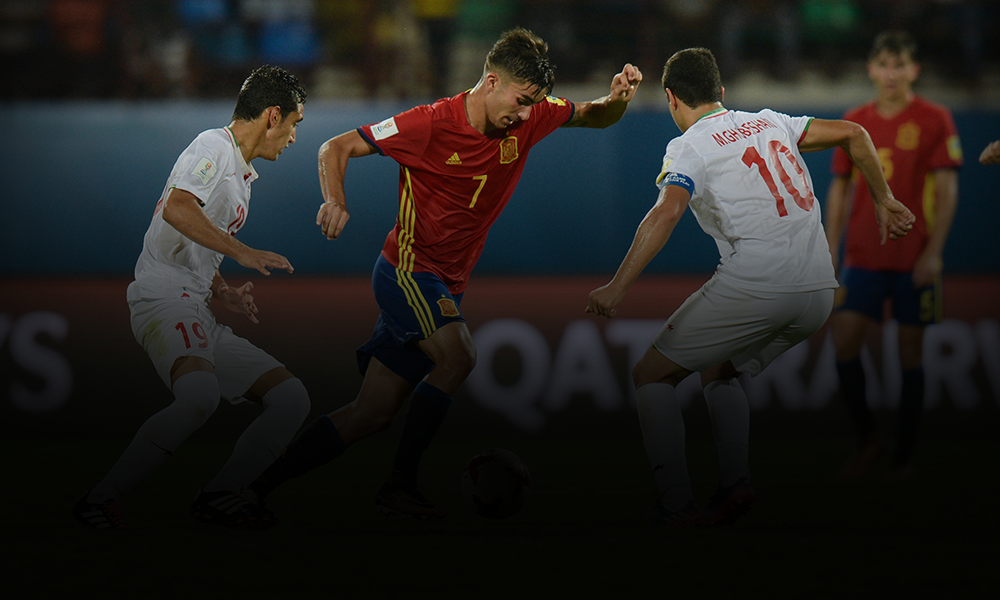Heading into the 2014 World Cup, Spain are the defending champions, but certainly not the hot favourites to retain their title. This seems strange, considering the fact that they followed up their World Cup triumph with a domineering display at Euro 2012, and reached the final of the Confederations Cup last year as well, only to lose to hosts Brazil at a rocking Maracana. Regardless of pre-tournament expectations, this Spain side is one that must be regarded with respect, because they certainly have the quality to win the title yet again.
BASIC FORMATION
Ever since the arrival of Vicente Del Bosque, Spain have shifted to a controlling style of play. Love it or hate it, the tiki taka of Spain has brought them the trophies, and few would blame Del Bosque for shifting away from this style of play that has proven to be so brutally effective. With or without a striker, Spain can be expected to line up in a 4-3-3, with lots of midfielders that help them to retain the ball and dominate possession. Secondary options that we may see are the 4-2-3-1(likely) and the 4-4-2(unlikely). It will not surprise anyone to see Spain come out and line up without a recognised striker, with Cesc serving as the ‘False 9’

Made using Tactical Pad
ANALYSIS
The formation and system that is going to be used predominantly is a 4-3-3. The main objective of the team is to control the ball, dominate possession, and create chances in this way. This control of the ball is both an attacking, and a defensive ploy. Of course, as we all know, the presence of ball playing defenders is of paramount importance to such a style. Assuming a starting line-up of Juanfran, Pique, Sergio Ramos, and Jordi Alba, there surely is no dearth ball playing ability. With Spain pressing high up the pitch to try and recover the ball quickly, the defensive line will also be high. The towering Pique and athletic Ramos are surely important here, but reassuringly for fans of La Roja, the back up cast looks strong too. Martinez and Albiol are expected to be the back up. Out on the wings, Juanfran has had a good season with Atletico, and provides attacking impetus and width, which can be important, especially when Spain have someone like Silva playing ahead of him. Alba does the same on the left, and his partnership with Iniesta is important. In terms of the back up, Alberto Moreno of Sevilla looked like the favourite to play behind Alba, but Azpilicueta got the nod over Moreno, probably due to his versatility and ability to fill in at both, right and left full back.
MORE READING | Interview with Spanish expert & beINSPORT, Daily Mirror journalist, David Cartlidge
The midfield is where it gets interesting. With ball retention in mind, the midfield assumes critical importance. Sergio Busquets is sure to start in the holding role, from where he drops back towards his goal while Spain have the ball. This is where he plays his simple passes from, and looks to bring the more advanced midfielders into the game. The players ahead of him are the ones who move the ball. Xavi and Alonso shuttle from box to box, playing simple passes that help build attacks. These are the midfielders that will play a lot of the ‘pass before the assist’ passes. What’s important is how they move the ball around to shift opposition defences. With opponents often packing the defence to thwart La Roja, their passing is important. The only doubt arises when they’re pressed heavily in midfield. At the Confederations Cup last year, Xavi and Iniesta in midfield struggled when they were pressed, and failed to get the ball forward effectively. The trio in front of them are also all midfielders most of the time, with Silva, Cesc, and Iniesta expected to start here. These 6 players have a good sense of interplay, but in order to make their short passing game work, they need to be close together. This leaves them open to pressing, and the lack of pace in behind results in a failure to fully exploit the length of the pitch too. It’s because of this that pressing in midfield is so effective against Spain.

Made using Tactical Pad. The arrows indicate the space that is left unutilised by the False/9
This is where Fernando Torres comes into the picture. Many were surprised to see him selected, but his pace and intelligent running offer Spain a viable option while trying to avoid pressing. Jesus Navas becomes important for the same reason. In the Euro 2012 group game against Italy, the Azurri had Spain strangled until Navas came on. The pacy winger allowed Spain the spread the play, and cause Italy problems at left wing back, who was higher up the pitch to make up numbers in midfield. This is why it was a great surprise to see him snubbed by Del Bosque.
Diego Costa is also important here. He represents the ‘Plan B’ most people talk about when criticising Spain. There are two ways he can be used. Costa might start in the aforementioned Fernando Torres role, and serve as an aerial target. This is something he does very well, as we’ve seen this past season at Atletico Madrid. He can win a lot of aerial duels, and he hold it up well too. Costa also possesses the ability to run behind the defence with pace, and stretch them there.
The other option is to use him off the bench. If teams do have to press Spain hard for 60 minutes, it would take considerable physical effort to be able to do so. The climatic conditions in Brazil only make such an effort harder. In such a situation, if a player like Diego Costa were to be thrown on for the last 25-30 minutes against a tiring defence, he could really do some damage.
The weakness is the age of Xavi and Alonso. They’re both 4 years older than the team that led Spain to the World Cup in South Africa. While Koke is capable of replacing Xavi (Xavi himself has nominated him as his successor), and is a bit more physical too, one fears for Spain if Alonso were to be injured. Alcantara is out, and Cesc hasn’t really convinced when deployed in such a capacity at Barcelona.
The defence is also prone to errors. Due to the extent of their dominance in the last few years, the Ramos Pique combine hasn’t really been tested well, and hasn’t really passed when tested. The high line requires pace to defend, and Ramos is someone who has such pace, but Pique’s speed going backwards is under doubt. A lot of their defence stems from the forwards, who press high and press well, but the soft underbelly can be exploited by quality opposition. Brazil showed just how it can be done, and teams like Argentina, with Lionel Messi, could really hurt Spain here.
Another, unlikely method of play is the 4-4-2. The partnership of Villa and Costa, which has been extremely successful at club level, could be transferred onto the World stage. This could be facilitated by playing Busquets and Alonso in a deeper midfield role. If nothing else, it could be used as a surprise tactic.
KEY PLAYERS
Xabi Alonso | The key player for La Furia Roja is definitely Xabi Alonso. The Real Madrid man is good at keeping possession and controlling and dictating play from the middle of the park. He rarely makes his way forward, staying and adding a layer of defensive protection as well. What’s most impressive is his range of passing. He can play short passes if need be, and also play longer, more direct passes if Spain have to play that way. Alonso can also fit into any of the different systems Spain might want to utilise seamlessly. What makes him most important is surely the fact that he cannot be replaced so easily. In case he does pick up injury or suspension, there’s no real direct replacement in the squad for him, and no one who can essay the variety of roles that he can.
Diego Costa | Diego Costa will also be important. The Atletico Madrid striker poses the solution to the problems that Spain face from the midfield press. His pace and power are vital to stretching defences and creating space for the adroit midfielders that Spain have so many of. Regardless of whether he is used as an impact player, or a starter, Costa is the striker that Spain so desperately need to fill the final piece of the puzzle, and could be the player to secure an unprecedented 4th major trophy in a row.
TALENT RADAR KEY YOUNG PLAYERS
Koke | The key young player is certainly Koke. The Atleti man has enjoyed a great season, winning La Liga and getting all the way to the Champions League final. Koke was also the winner of the inaugural Talent Radar Player of the Season award, and three other awards in our 2013-14 Talent Radar Young Player Awards.. The youngster has combined slick passing, good vision, and attacking flair with a ferocious work rate, and a never say die attitude. Xavi has already nominated Koke as his successor. Koke is someone who can play various roles in the team, and while he may not be a starter, he will be key coming off the bench. In the event that one of Xavi, or Alonso pick up an injury or suspension, Koke can expect to be drafted in immediately. Koke is a player who can play the passing game, and the physical game, and with teams trying to rough Spain up, he is the perfect antidote.

Extra
Somehow, Spain don’t come into this tournament as favourites, and this has to be the biggest mistake most are making. They’re in a tough group, but that is not to say that they cannot overcome the opponents there. Spain have the quality and experience to beat the best in the world, and anyone who counts them out is making a huge mistake.
Read our Analysis of all teams here, and all other WC2014 related content here.
- Analysis: Are Chelsea’s pressing issues a concern? - October 5, 2020
- Has Financial Fair Play Been Worth It? - August 27, 2020
- Tactical Philosophy: Frank Lampard - May 20, 2020
























































